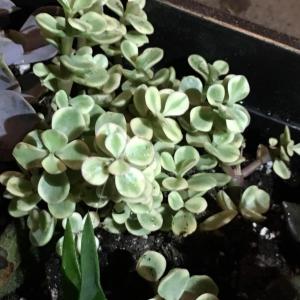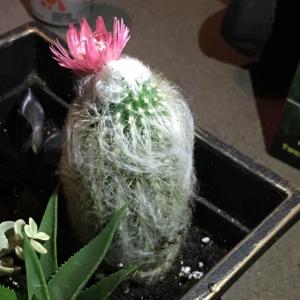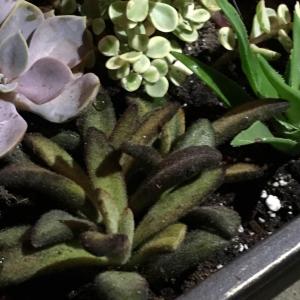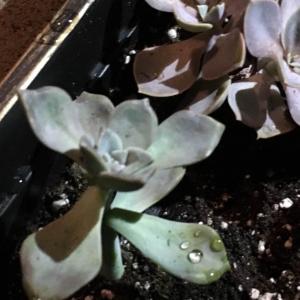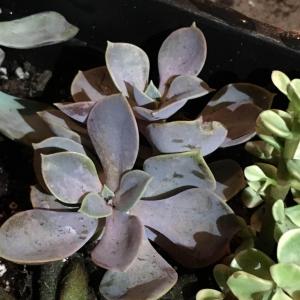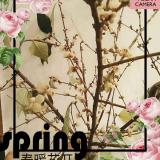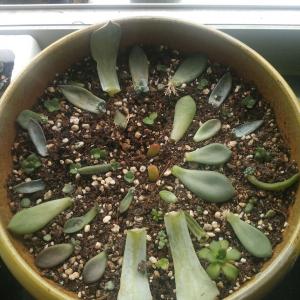文章
小九
2017年09月27日


1、及时修剪
#桃 原产地海拔高,光照强,形成了桃特别喜光的特性,加之桃树枝有多次加长生长高峰和多次副梢发生,因此秋季及时修剪,创造良好的通风透光条件比其他树种更显得重要。
(1)疏枝。及时疏除过密、细弱、病虫、直立无用枝及冗长无叶枝等。
(2)拉枝。对长势旺的直立桃树,采取拉枝、吊枝和撑枝等法,加大主枝角度,缓和树势。
(3)扭梢。对竞争枝和有空间保留的直立枝可进行扭梢和下压,对树冠上部的强旺枝(组)可在疏去强梢后,自基部扭伤或下压控制其生长,促进花芽进一步分化,利用其结果。扭转时应小心,可扭转180度,但不可扭断。
(4)回缩。对冠内重叠枝、交叉枝、老弱枝组可回缩,对已先端结果的中、长枝及时回缩,留下基部2—3个预备枝,促其生长。
(5)摘心。对一些贪青徒长的晚秋梢摘心或采取其它控长的措施,以促进枝条老熟。

2、防旱排涝
桃虽然属耐旱树种,但为夺取高产、优质、稳产,必须在各生育期及时保证水分供给。尤其在干旱少雨的北方,若秋季持续干旱应设法补水,对晚熟品种尤为重要。
桃树耐旱忌涝,在多雨的秋季要特别注意排涝。雨季结合中耕除草把树盘整理成内高外低,以防根颈处积水,造成颈根腐烂。北方果区果农总结的小雨后浅耧、大雨后深锄,对防旱排涝作用极大宜推广。
3、病虫防治
秋季保护好桃树叶片和枝干不受病虫危害,可提高树体光合效能,增加贮备营养,对当年晚熟果的产量、质量和来年结果影响颇大。可使用京博推出的桃树套餐方案。
4、秋施基肥
实践表明秋施基肥比春施基肥开花早且花多花大坐果率高。秋施基肥应以有机肥为主并加入适量化肥;以氮、磷、钾为主,适量掺入中、微量元素。施肥量应占全年施肥量的60—70%。成年树以产量和生长势为施肥依据,新栽幼树以有机肥为主,不施或少施氮肥为主。对品种而言,早熟品种和直立性强的品种可适当少施氮;老树、弱树宜适当提高氮肥施入量。
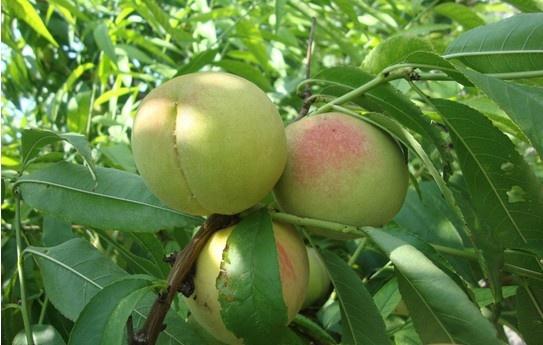
秋施基肥的最佳时期为9月前后,亦可在落叶前后结合秋耕进行,施肥方法与其他果树相同。近年有的果农于对结果量大的树,于采果后叶喷2—3次京博钾效果甚佳,叶喷间隔15天左右。
5、灌好封冻水
为了保证桃树越冬期水分供应,需要在秋施基肥后的冬初10月下旬至11月中下旬灌一次封冻水,灌时使水湿透干土层。如果秋雨多,土壤墒情好,土质较粘的可轻灌或免灌。
1
1
文章
小九
2017年09月27日

慢慢入秋了,气温也开始慢慢转凉了,早晚的温差开始变大了,因此就容易生病。吃这三道菜不仅能开胃还可预防疾病。
1、#生菜

生菜是一种十分常见的蔬菜,不仅具有良好的口感,其中所含的营养素也是十分丰富的。在生菜中含有大量的维生素、微量元素等成分,另外还含有大量的水分,所以说多吃点生菜既能为人体进行养分的补充,也能很好的起到补水的作用。
同时,在生菜中还含有一定的助眠成分,被人体摄取之后能对神经起到一定的抑制作用,这对于稳定情绪、助眠安神发挥十分重要的效果。所以对于一些胃口不佳的人,多吃点生菜能起到不错的开胃作用。
2、山药

山药是一种药食同源的食物,不仅能当做美味的食物享用,同时还是极其重要的一道药膳食材,美味可口的山药能瞬间让你拥有强烈的食欲。
在山药中含丰富的淀粉酶、多酚氧化酶等成分,这些物质被人体摄取之后能有效阻止血液中的脂肪在血管壁上产生堆积,这也是起到防止心脑血管疾病的重要因素,对于老年人来说是很适用的。
3、玉米

秋季是吃玉米养生的黄金季节,玉米不仅具有极好的口感,营养价值也很高,在玉米中含有丰富的不饱和脂肪酸、微量元素、氨基酸等营养素,这些物质都是人体生长所需的重要成分,并且还能有效降低血液中胆固醇的浓度,从而起到不错的保护血管的作用,更是防止心脑血管产生的美食。
在吃玉米的时候,其玉米须也可以适量吃一些,千万别小看它,其所含的营养价值更丰富哦!
总结:为了更好的进行食疗养生,大家在日常饮食中可以适量多吃一些,相信一定能起到不错的养生防病的作用。
1、#生菜

生菜是一种十分常见的蔬菜,不仅具有良好的口感,其中所含的营养素也是十分丰富的。在生菜中含有大量的维生素、微量元素等成分,另外还含有大量的水分,所以说多吃点生菜既能为人体进行养分的补充,也能很好的起到补水的作用。
同时,在生菜中还含有一定的助眠成分,被人体摄取之后能对神经起到一定的抑制作用,这对于稳定情绪、助眠安神发挥十分重要的效果。所以对于一些胃口不佳的人,多吃点生菜能起到不错的开胃作用。
2、山药

山药是一种药食同源的食物,不仅能当做美味的食物享用,同时还是极其重要的一道药膳食材,美味可口的山药能瞬间让你拥有强烈的食欲。
在山药中含丰富的淀粉酶、多酚氧化酶等成分,这些物质被人体摄取之后能有效阻止血液中的脂肪在血管壁上产生堆积,这也是起到防止心脑血管疾病的重要因素,对于老年人来说是很适用的。
3、玉米

秋季是吃玉米养生的黄金季节,玉米不仅具有极好的口感,营养价值也很高,在玉米中含有丰富的不饱和脂肪酸、微量元素、氨基酸等营养素,这些物质都是人体生长所需的重要成分,并且还能有效降低血液中胆固醇的浓度,从而起到不错的保护血管的作用,更是防止心脑血管产生的美食。
在吃玉米的时候,其玉米须也可以适量吃一些,千万别小看它,其所含的营养价值更丰富哦!
总结:为了更好的进行食疗养生,大家在日常饮食中可以适量多吃一些,相信一定能起到不错的养生防病的作用。
1
0
文章
Dummer. ゛☀
2017年09月27日

All species of Honeysuckle plant (Lonicera) fall into two categories: 1) arching shrubs and 2) twinning bines, with the large majority being climbing plants that make for attractive Honeysuckle vines. These Honeysuckle vines produce trumpet shaped flowers, honey-like scents, and sweet nectar that attract butterflies, hummingbirds, and even humans who enjoy sampling the nectar.
This type of vine is quite easy to grow when correctly planted and maintained. If you find yourself having trouble getting your Honeysuckle vine to thrive, you may be making some of the following mistakes in caring for your plant.
These mistakes are common, but fortunately, they are also easily remedied.
1. Planting Too Late in the Season
Honeysuckle vines should be planted during the spring in cooler climates because their roots thrive when cool and shaded. Make sure to wait until the final frost before planting them.
When the timing is finally right, locate a spot for planting where they’ll get full sun, or at the very least, partial sun exposure. Plant your Honeysuckle at a soil depth of 18 inches (45 cm) and lay an organic fertilizer or compost over the top 3 inches (7.5 cm).
2. Too Little Water at First, Too Much Water Later
This type of vine is sensitive to the amount of water and moisture it receives. When you first plant your Honeysuckle, the plant will need a considerable amount of water to help it grow. However, by the time summer arrives your vine will be more fortified and only need small amounts of water, even during dry spells. Many people make the mistake of continuing to water the plant equally throughout these different stages, which is a definite recipe for harmful overwatering in the summer months.
The more important goal isn’t to provide the vine with excess moisture, but rather to retain the modest level of moisture that is proper for flourishing. To retain moisture, mulch the base of the plant heavily. A 2-inch (5 cm) layer of dried leaves, pine needles, or shredded bark makes an ideal mulch for the Honeysuckle vine.
3. Incorrect Use of Fertilizer
At the beginning of the growing season, add a balanced fertilizer (10-10-10) around the base of the plant. Make sure you choose a controlled release variety. In midsummer, fertilize again with a balanced formula liquid fertilizer to encourage continual flower blooms.
Be especially careful not to fertilize too much. Many growers don’t realize they’ve made this mistake until it’s too late because things will seem just fine at first. Using too much fertilizer will still cause the foliage to thrive, which will give the initial impression of a successful vine, but the excess fertilizer will negatively impact flowering down the line. Keep the soil pH between 6.1 and 7.8.
4. Poor Timing When Pruning
Allow plants to become well established before pruning. Pruning Honeysuckle too early can either reduce the number of blooms the vine produces or kill the whole plant. Honeysuckle vines should be allowed to grow for two years before pruning. Prune lightly during the growing season to encourage new growth. With light pruning, only remove old and bloomed-out flowers.
Older shoots on established plants should be removed during the spring to encourage later flowering. It’s safe to cut the plant back 1/3 for a major pruning. Late February to March are the ideal times to prune most Honeysuckle vines.
5. Mold from Poor Ventilation
Honeysuckle vines are prone to powdery mildews and molds. To reduce the chance of these developing on the vine, make sure there is adequate air movement around your plants. Always plant in open air.
6. Improper Support
Most Honeysuckle vines are grown with support systems, although sometimes they’re grown as ground cover for erosion control. If using support systems, it’s important to use them correctly. The trellis or arbor should be in place before planting. This removes the possibility of damaging the plant when trying to install a trellis on an area where a plant is already established.
Plant the vine 6 to 12 inches (15 to 30 cm) away from the support to allow enough room for it to grow. Once the vine starts climbing the support system, tie it to the arbor using a strong, stretchy material, like strips of old nylon hosiery. Cross the material between the stem and the support system to prevent the stems from rubbing together.

This type of vine is quite easy to grow when correctly planted and maintained. If you find yourself having trouble getting your Honeysuckle vine to thrive, you may be making some of the following mistakes in caring for your plant.
These mistakes are common, but fortunately, they are also easily remedied.

1. Planting Too Late in the Season
Honeysuckle vines should be planted during the spring in cooler climates because their roots thrive when cool and shaded. Make sure to wait until the final frost before planting them.
When the timing is finally right, locate a spot for planting where they’ll get full sun, or at the very least, partial sun exposure. Plant your Honeysuckle at a soil depth of 18 inches (45 cm) and lay an organic fertilizer or compost over the top 3 inches (7.5 cm).

2. Too Little Water at First, Too Much Water Later
This type of vine is sensitive to the amount of water and moisture it receives. When you first plant your Honeysuckle, the plant will need a considerable amount of water to help it grow. However, by the time summer arrives your vine will be more fortified and only need small amounts of water, even during dry spells. Many people make the mistake of continuing to water the plant equally throughout these different stages, which is a definite recipe for harmful overwatering in the summer months.

The more important goal isn’t to provide the vine with excess moisture, but rather to retain the modest level of moisture that is proper for flourishing. To retain moisture, mulch the base of the plant heavily. A 2-inch (5 cm) layer of dried leaves, pine needles, or shredded bark makes an ideal mulch for the Honeysuckle vine.
3. Incorrect Use of Fertilizer
At the beginning of the growing season, add a balanced fertilizer (10-10-10) around the base of the plant. Make sure you choose a controlled release variety. In midsummer, fertilize again with a balanced formula liquid fertilizer to encourage continual flower blooms.

Be especially careful not to fertilize too much. Many growers don’t realize they’ve made this mistake until it’s too late because things will seem just fine at first. Using too much fertilizer will still cause the foliage to thrive, which will give the initial impression of a successful vine, but the excess fertilizer will negatively impact flowering down the line. Keep the soil pH between 6.1 and 7.8.

4. Poor Timing When Pruning
Allow plants to become well established before pruning. Pruning Honeysuckle too early can either reduce the number of blooms the vine produces or kill the whole plant. Honeysuckle vines should be allowed to grow for two years before pruning. Prune lightly during the growing season to encourage new growth. With light pruning, only remove old and bloomed-out flowers.
Older shoots on established plants should be removed during the spring to encourage later flowering. It’s safe to cut the plant back 1/3 for a major pruning. Late February to March are the ideal times to prune most Honeysuckle vines.

5. Mold from Poor Ventilation
Honeysuckle vines are prone to powdery mildews and molds. To reduce the chance of these developing on the vine, make sure there is adequate air movement around your plants. Always plant in open air.
6. Improper Support
Most Honeysuckle vines are grown with support systems, although sometimes they’re grown as ground cover for erosion control. If using support systems, it’s important to use them correctly. The trellis or arbor should be in place before planting. This removes the possibility of damaging the plant when trying to install a trellis on an area where a plant is already established.

Plant the vine 6 to 12 inches (15 to 30 cm) away from the support to allow enough room for it to grow. Once the vine starts climbing the support system, tie it to the arbor using a strong, stretchy material, like strips of old nylon hosiery. Cross the material between the stem and the support system to prevent the stems from rubbing together.
0
0
文章
小九
2017年09月26日

#剑兰 即唐菖蒲,是有名的家庭观赏花卉之一,那么剑兰常见的病虫害主要有哪些病症呢,本文主要介绍剑兰球茎腐烂病、剑兰细菌性疮痂病等病症及其防治方法。
剑兰养殖的病虫害防治:
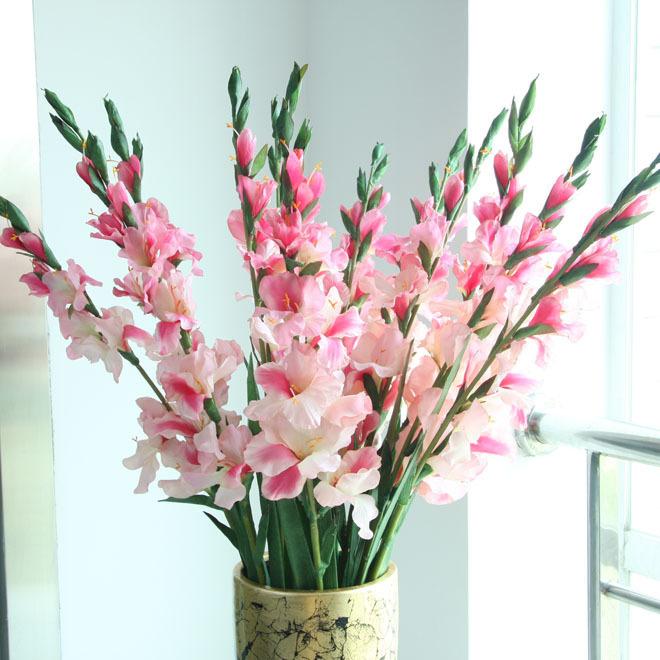
1、剑兰球茎腐烂病
【症状】病害主要发生在植株下部组织。感病球茎出现4-6mm的黄至黑褐色的下陷病斑,边缘稍隆起,呈溃疡状。叶基受害后常有少数明显的黑斑;叶鞘感染则出现暗褐色水渍状斑纹;叶片发病后则黄化凋萎。环境干燥时,病部腐烂干枯;湿润的条件下,病部组织软化消解,有时还有细菌脓液溢出,最后仅残留维管束组织的纤维,此时,茎干易被折断。
【防治方法】
1.优选栽培地和加强肥水管理。避免在发病区连作,最好用生石灰或甲醛消毒土壤;施用草木灰和磷肥作基肥,及时排除圃地积水。
2.种球处理。选用无病种球,经1000倍商锰酸押液消毒后栽植;收获的种球要严格挑选,淘汰病球。
3.清除侵染来源。发现病株应及时铲除烧毁,并消毒邻近土壤。
2、剑兰细菌性疮痂病
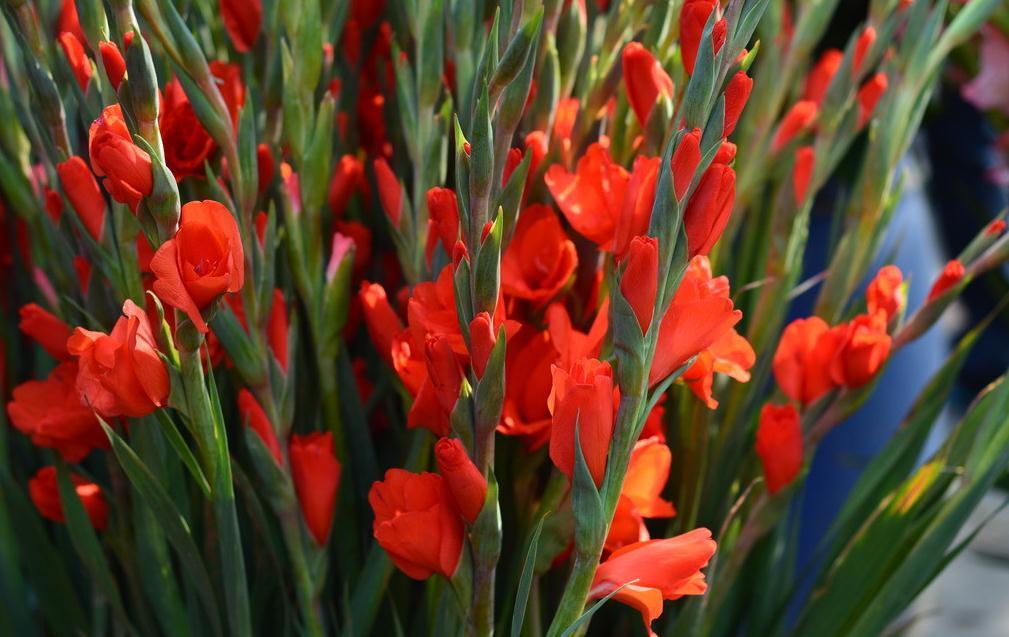
【症状】该病主要发生在植株下部组织。发病初期,感病球茎出现水渍状病斑,病斑淡黄色,以后病斑下陷,后期呈褐色至黑褐色,边缘隆起疮痴状。湿度大时,病斑上有黄褐色胶状菌脓,并黏连外皮及土粒,严重时球茎和茎基部腐烂。叶基发病常产生红色降起的斑点,叶鞘感病则出现暗褐色水溃状斑纹,扩展后呈长条形斑,病郎组织软腐,最后残留维管束纤维,植株叶片铕化凋萎,或植株易被折断或倒折枯死。在干燥条件下,病部呈腐烂干枯状。
【防治方法】
1.选用无病种球繁殖,发现病株及时铲除,并消毒土壤。
2.加强管理。应避免病地连作;种植时可进行种球消毒,用1000倍高锰酸钾液浸泡。收获种球应严格挑选健康的,然后再贮藏。基肥中加人草木灰,磷肥为好。田地应及时排除渍水,培育健壮苗木。
3.发病初或采花后,喷施68%农用链霉素可溶性水剂2000倍液,连续2-3次,效果较好。
剑兰养殖的病虫害防治:

1、剑兰球茎腐烂病
【症状】病害主要发生在植株下部组织。感病球茎出现4-6mm的黄至黑褐色的下陷病斑,边缘稍隆起,呈溃疡状。叶基受害后常有少数明显的黑斑;叶鞘感染则出现暗褐色水渍状斑纹;叶片发病后则黄化凋萎。环境干燥时,病部腐烂干枯;湿润的条件下,病部组织软化消解,有时还有细菌脓液溢出,最后仅残留维管束组织的纤维,此时,茎干易被折断。
【防治方法】
1.优选栽培地和加强肥水管理。避免在发病区连作,最好用生石灰或甲醛消毒土壤;施用草木灰和磷肥作基肥,及时排除圃地积水。
2.种球处理。选用无病种球,经1000倍商锰酸押液消毒后栽植;收获的种球要严格挑选,淘汰病球。
3.清除侵染来源。发现病株应及时铲除烧毁,并消毒邻近土壤。
2、剑兰细菌性疮痂病

【症状】该病主要发生在植株下部组织。发病初期,感病球茎出现水渍状病斑,病斑淡黄色,以后病斑下陷,后期呈褐色至黑褐色,边缘隆起疮痴状。湿度大时,病斑上有黄褐色胶状菌脓,并黏连外皮及土粒,严重时球茎和茎基部腐烂。叶基发病常产生红色降起的斑点,叶鞘感病则出现暗褐色水溃状斑纹,扩展后呈长条形斑,病郎组织软腐,最后残留维管束纤维,植株叶片铕化凋萎,或植株易被折断或倒折枯死。在干燥条件下,病部呈腐烂干枯状。
【防治方法】
1.选用无病种球繁殖,发现病株及时铲除,并消毒土壤。
2.加强管理。应避免病地连作;种植时可进行种球消毒,用1000倍高锰酸钾液浸泡。收获种球应严格挑选健康的,然后再贮藏。基肥中加人草木灰,磷肥为好。田地应及时排除渍水,培育健壮苗木。
3.发病初或采花后,喷施68%农用链霉素可溶性水剂2000倍液,连续2-3次,效果较好。
0
0
文章
小九
2017年09月26日

盆栽#茉莉 ,最容易产生叶子发黄的问题,轻者叶子萎黄而生长不良,开花也不好;重者则逐渐衰弱死去。造成叶子发黄的原因不外有以下三种情况:
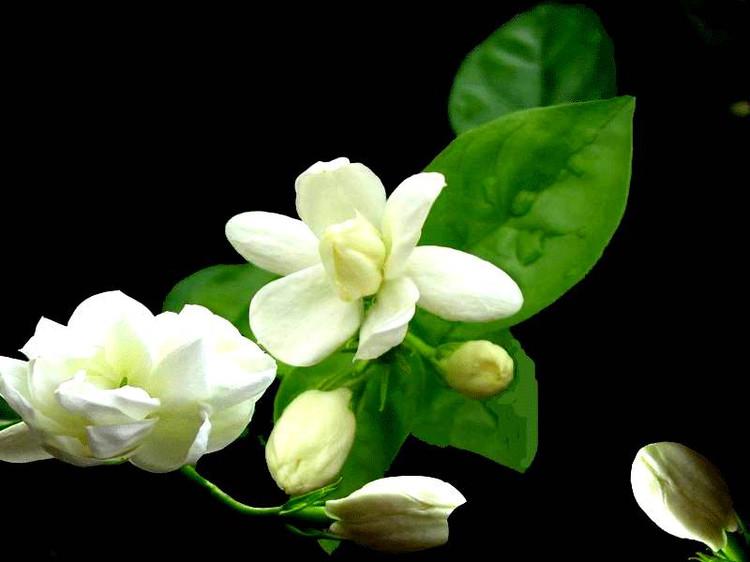
(1)浇水不当,盆土处于长期持续的潮湿,而导致了烂根;
(2)浇灌用水与盆栽土壤偏碱;
(3)长期没有换土换盆及施肥,养分不足。茱莉叶子发黄的原因有时是一种原因造成,有时是两种或多种原因综合影响造成,这就要具体分析,以作判断。如果植株长期生长不良,叶子渐渐发黄,这大都是浇灌用水及盆栽土壤偏碱所致;如果是正常生长的植株,叶子突然变黄,则往往是由于浇水过量根部腐烂所致。查明原因后,我们可采联下到措施来挽救;
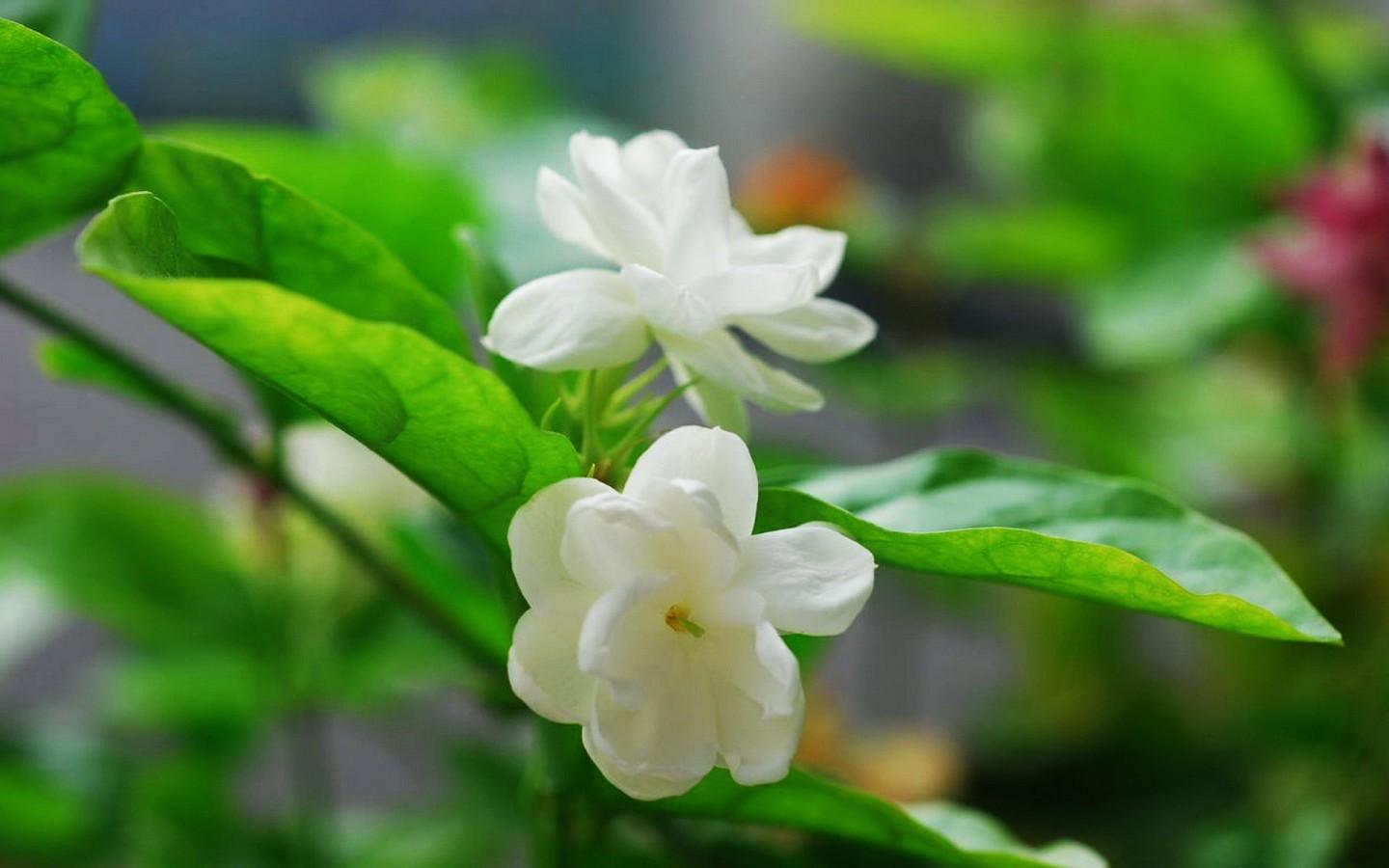
(1)对浇水不当引起烂根而叶子发黄的植株,可将盆移到荫凉处,停止用肥,严格节制浇水,盆土不是太干,就一定不要浇水,并经常疏松盆土,改善盆土通气状況,这样过―段时间植株就可逐渐长出新根;
(2)如果是浇灌用水及盆土偏减所致,则可在生长期间施用稀薄矾肥水,不久植株的萎黄老叶就可回黄转绿;
(3)如果是长期未换盆未施肥而造成的黄叶,则只要将植株换盆,换以肥沃、疏松的沙壤土,并定期施用液肥就可。因此,爱好者必须注意,盆栽的茉莉,每年春季都应该换盆,以补充养分。
栽培中,有时还会出现枝繁叶茂、生长很好,但就是不开花或开花很少的情况。这往往是由于阳光不足、过度荫蔽或者施用氮肥太多所致,只要多见阳光,适当节制水肥,就可孕蕾开花。

(1)浇水不当,盆土处于长期持续的潮湿,而导致了烂根;
(2)浇灌用水与盆栽土壤偏碱;
(3)长期没有换土换盆及施肥,养分不足。茱莉叶子发黄的原因有时是一种原因造成,有时是两种或多种原因综合影响造成,这就要具体分析,以作判断。如果植株长期生长不良,叶子渐渐发黄,这大都是浇灌用水及盆栽土壤偏碱所致;如果是正常生长的植株,叶子突然变黄,则往往是由于浇水过量根部腐烂所致。查明原因后,我们可采联下到措施来挽救;

(1)对浇水不当引起烂根而叶子发黄的植株,可将盆移到荫凉处,停止用肥,严格节制浇水,盆土不是太干,就一定不要浇水,并经常疏松盆土,改善盆土通气状況,这样过―段时间植株就可逐渐长出新根;
(2)如果是浇灌用水及盆土偏减所致,则可在生长期间施用稀薄矾肥水,不久植株的萎黄老叶就可回黄转绿;
(3)如果是长期未换盆未施肥而造成的黄叶,则只要将植株换盆,换以肥沃、疏松的沙壤土,并定期施用液肥就可。因此,爱好者必须注意,盆栽的茉莉,每年春季都应该换盆,以补充养分。
栽培中,有时还会出现枝繁叶茂、生长很好,但就是不开花或开花很少的情况。这往往是由于阳光不足、过度荫蔽或者施用氮肥太多所致,只要多见阳光,适当节制水肥,就可孕蕾开花。
0
1







